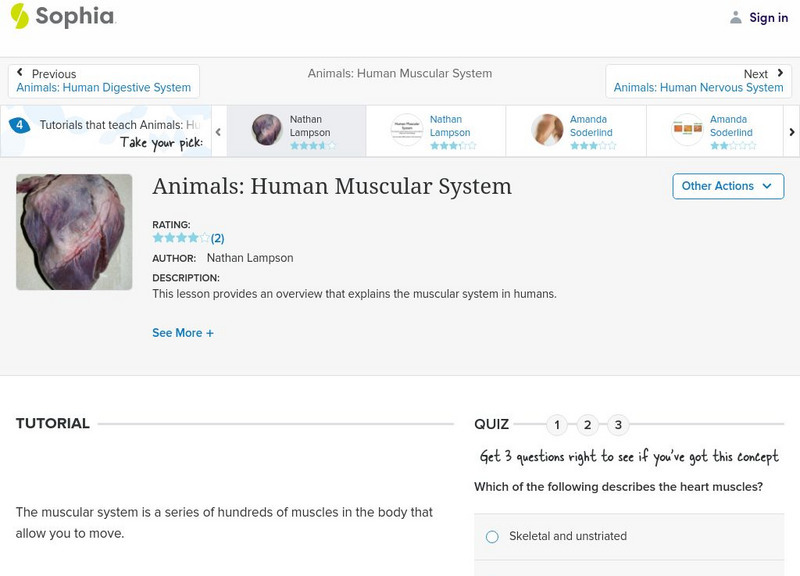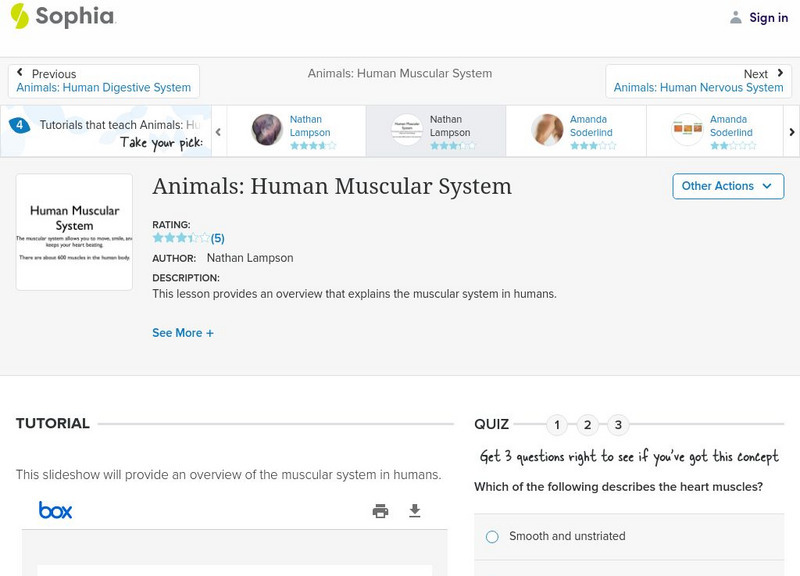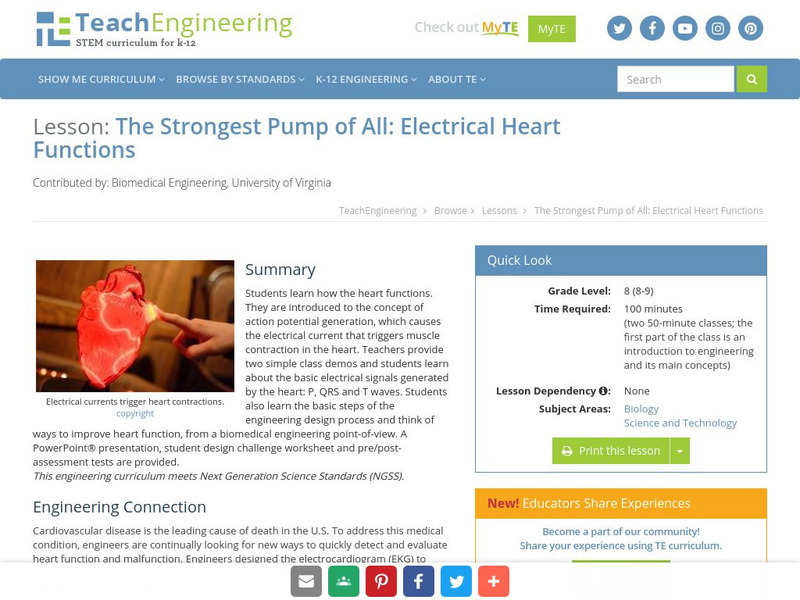Serendip
How Do Muscles Get the Energy They Need for Athletic Activity?
Every muscle movement requires energy, but where does that energy come from? Scholars answer this question and more as they complete a worksheet. By following the directions, completing research, and discussing it as a class, they begin...
National Library of Medicine
Electricity, Frankenstein, and the Spark of Life
Shocking! After viewing a short clip from the 1931 movie, Frankenstein and reviewing electricity references in Mary Shelley's novel, class members examine Luigi Galvani's and Alessandro Volta's observations on electricity and muscle...
Curated OER
The Strongest Pump of All
Students examine how the heart functions and the concept of how electrical currents can affect muscle contractions. In this cardiovascular lesson students identify P, QRS and T complexes.
Curated OER
Muscular and Skeletal Systems
How do muscles move bones? Find out using a built-in-class model. Pupils construct a hand model with paper and string, then follow a series of directions to explore the movement process. Discover additional information about the muscular...
University of Minnesota
Homeostasis of Thermoregulation
Whether you're battling the flu or trying to warm up on a chilly day, your body's ability to react to temperature change is fascinating! Anatomy scholars discover the fantastic feedback loops that control body temperature in a rigorous...
Curated OER
Anatomy of a Kick
Students investigate the muscle system operating in the kick of a ball. The order in which the six muscle groups contract is noted as the movement is produced by the contraction of opposing muscles required to move a limb in opposing...
Curated OER
Movement, it's FUN-damental!
High schoolers discover how muscles work. In this biology lesson plan, students explain the causes of fatigue and muscle soreness. They create graphs and compare results with their classmate.
Curated OER
From One End to the Other
Seventh graders trace a piece of food through the alimentary canal and differentiate between mechanical and chemical digestion in several different hands-on activities related to digestion.
Curated OER
From One End to the Other
Seventh graders become more familiar with how our food is broken down mechanically and chemically. They also trace the food through the alimentary canal.
CK-12 Foundation
Ck 12: Biology: Muscle Contraction
[Free Registration/Login may be required to access all resource tools.] Describes how muscles contract according to the sliding filament theory.
Sophia Learning
Sophia: Animals: Human Muscular System: Lesson 2
This lesson provides an overview that explains the muscular system in humans. It is 2 of 4 in the series titled "Animals: Human Muscular System."
Sophia Learning
Sophia: Animals: Human Muscular System: Lesson 4
This lesson provides an overview that explains the muscular system in humans. It is 4 of 4 in the series titled "Animals: Human Muscular System."
Sophia Learning
Sophia: Animals: Human Muscular System: Lesson 1
This lesson provides an overview that explains the muscular system in humans. It is 1 of 4 in the series titled "Animals: Human Muscular System."
TeachEngineering
Teach Engineering: The Strongest Pump of All
For this lesson the young scholars will learn how the heart functions. Students will be introduced to the concept of action potential generation. The lesson will explain how action potential generation causes the electrical current that...













